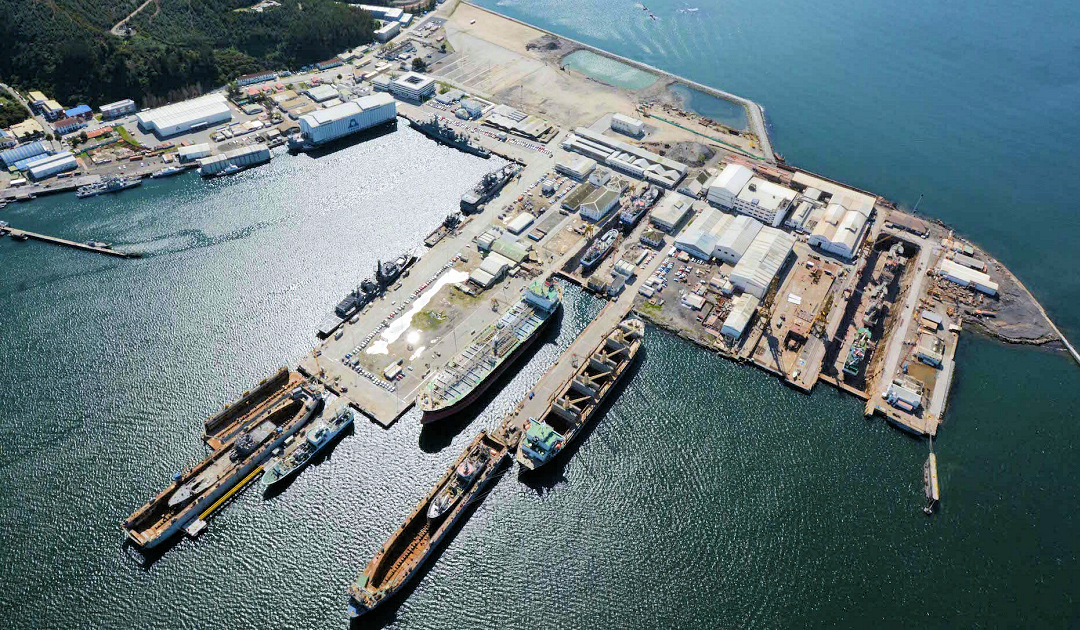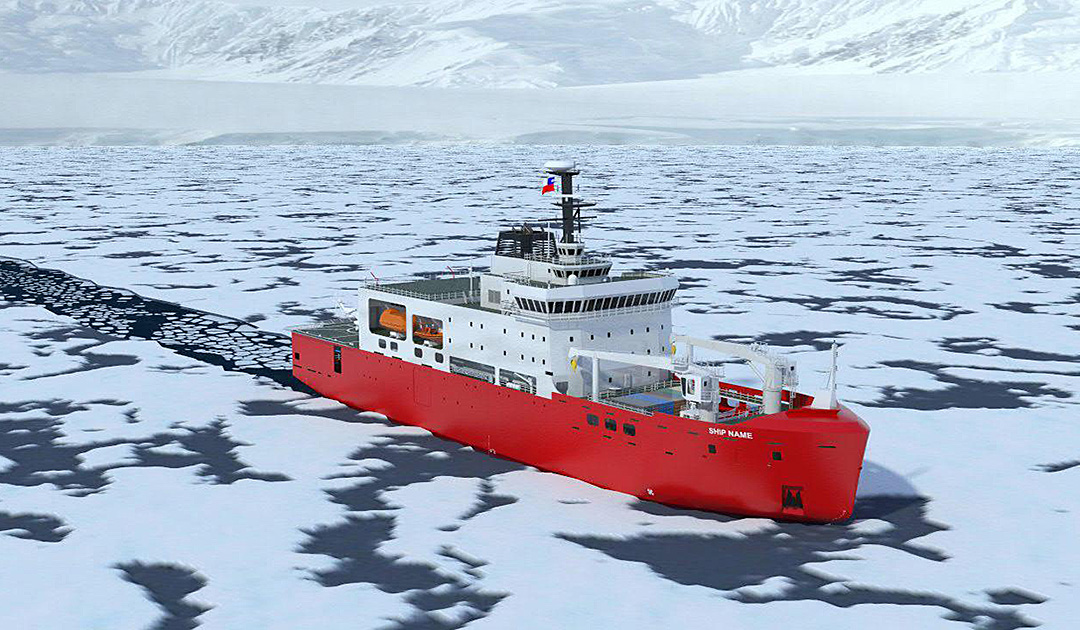
The construction of icebreakers is mostly left to Arctic countries due to their experience and technical capabilities. But now some countries no longer want to leave this technically demanding task to others, but are taking it into their own hands. This includes Chile, which made headlines two years ago with its “Antartica-1” project. The project envisions building its own icebreaker, the first in Latin America. Construction is now well advanced, as confirmed by the shipyard and the Chilean Navy.
According to the ASMAR shipyard in Talcahuano, construction of the vessel is now 60 percent completed and the ship can be launched between December 2022 and January 2023. “In the next few months, we hope to complete the installation of blocks, continue the installation of systems and the completion of living quarters. The next important milestone is the launching of the hull into the sea,” explains Jaime Sotomayor Bustamante, director of ASMAR.


Construction of the icebreaker began in 2018, but was pushed back in schedule primarily due to the pandemic. Originally, the ship should have been on its way to Antarctica as early as 2023. The new schedule now calls for systems to be installed and test runs to be undertaken from December 2023 onwards. It is then scheduled to see its first deployment in the 2024/25 Antarctic season. As the construction of the icebreaker is intended to underline Chile’s ambitions in Antarctica by being built domestically in Chile, it is being closely monitored and supported by the government. For the shipyard, the construction is the most complex and largest in history to date and also a prestige project. This is because it is the first icebreaker built in Latin America.

The new icebreaker will replace the Almirante Oscar Viel icebreaker, which is currently in service. Because the coast guard vessel, originally built in Canada, has now come to the end of its time at the age of 53. Since 1995, it provided service and supplied Chilean stations, conducted research cruises, and also supported the stations of other countries. In addition to a longer range and longer autonomously running time, the new vessel will also have a higher ice class. It will also house two helicopters in a hangar to expand supply, research and Serach-and-Rescue capabilities. A total of 86 crew members, 34 researchers and 19 20-foot containers plus 400 cubic meters of fuel and as much material are to be accommodated on the 111-meter-long ship. The 10’000 ton vessel is powered by 2 diesel-electric engines with a total output of 20’000 hp.
Dr Michael Wenger, PolarJournal
More on the topic





